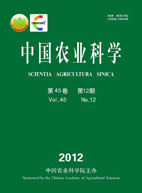-
Comparison of Factors Influencing Noodle Sensory Qualities
- ZHANG Bo, WEI Yi-Min, LI Wei-Jin
-
Scientia Agricultura Sinica. 2012, 45(12):
2447-2454.
doi:10.3864/j.issn.0578-1752.2012.12.013
-
 Abstract
(
1273 )
Abstract
(
1273 )
 PDF (584KB)
(
709
)
PDF (584KB)
(
709
)
 Save
Save
-
References |
Related Articles |
Metrics
【Objective】In order to compare the influence of wheat flour and making process on sensory qualities of noodle, 9 wheat flour samples were selected. 【Method】The effects of water addition, mixing time, resting time and the sheeting ratio on sensory qualities of noodle, with every type of flour, were studied using quadratic orthogonal rotation combination design. 【Result】The results showed that the coefficient of variations (CV) of color, springness, hardness, coherence, smoothness, total score and appearance decreased gradually. The proportions, that affect on the color, appearance, hardness, coherence, springness, smooth and total score of noodle, of flour sample were 95.18%, 80.64%, 45.96%, 70.94%, 56.30%, 38.64% and 79.17%, respectively. The total score of noodles making of Gaojin, Aikang58 and Xiaoyan6 flour samples were more than 75. The CV of total score of noodle making of Gaojin, Aikang58 and Xiaoyan6 flour samples were relatively low(<5%). 【Conclusion】It is concluded that color, springness and hardness of noodle were influenced by wheat flour and making process among sensory qualities. Noodle making stability was different among wheat flours. Compared with making process, the proportion of wheat flour influencing color, appearance, coherence, springness and total score of noodle is more than 50%. The water addition, mixing time and resting time mainly influence the springness and hardness of noodle.









